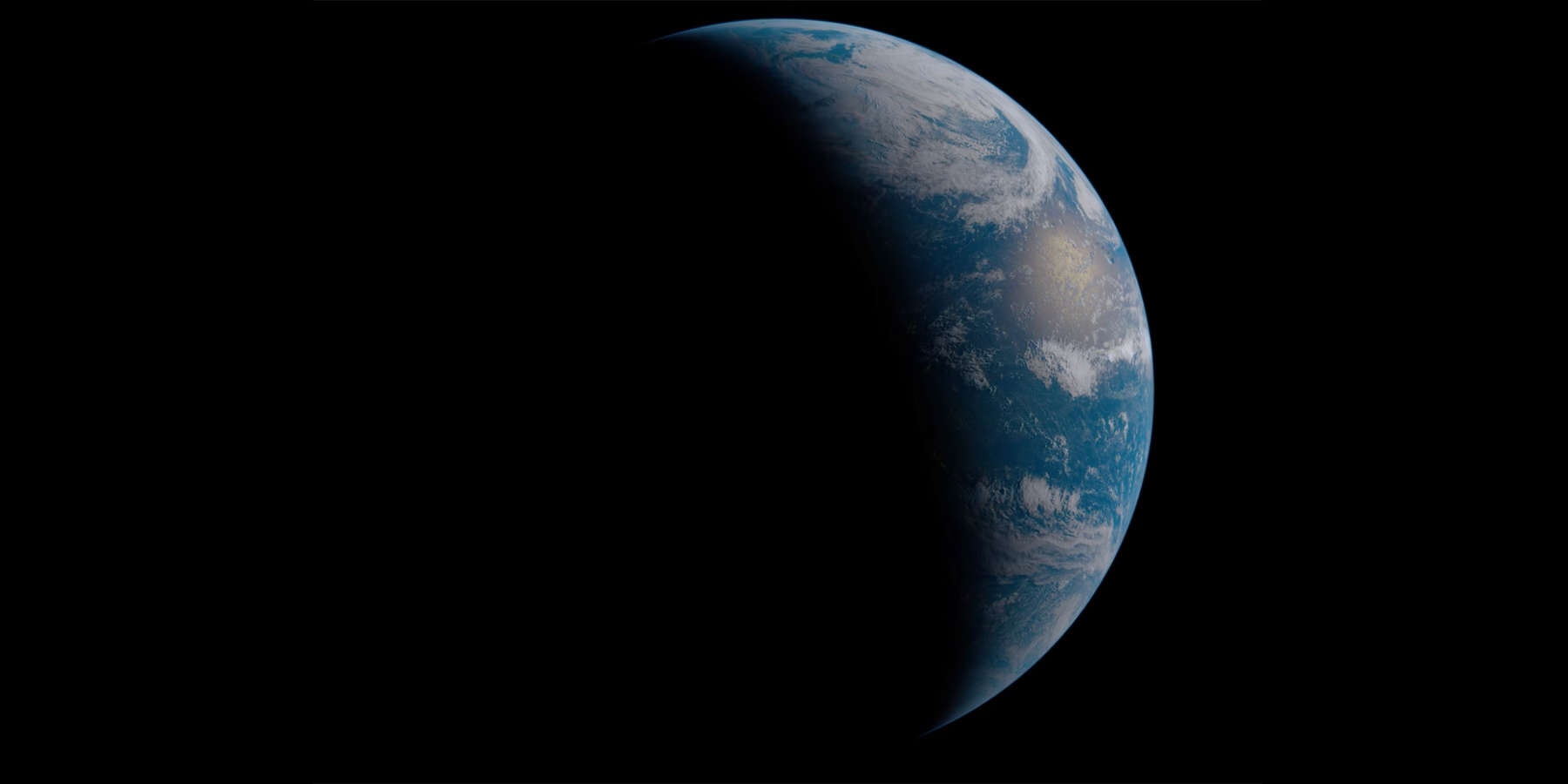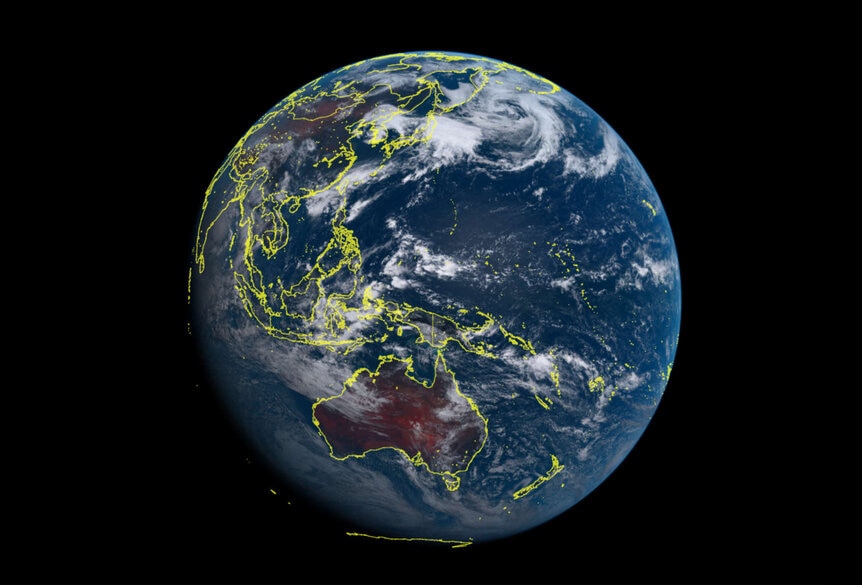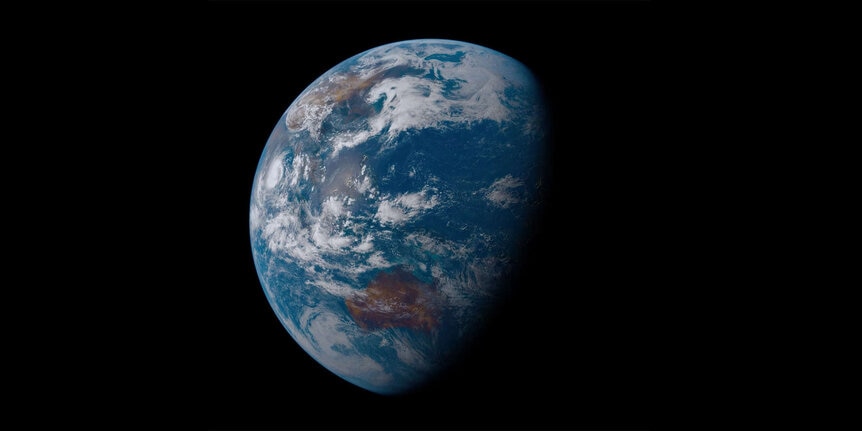Create a free profile to get unlimited access to exclusive videos, sweepstakes, and more!
The 75 seconds the Earth stood still

You live in a ball of rock and water and metal and air 13,000 kilometers wide spinning once per day at 1,600 kilometers per hour at the equator.
You can't feel it because the Earth is big and we are small, and the change on our size scale is minuscule. Yet you notice it; the Sun appears to rise and set, day turns to night and back to day. It's not at all hard to see why, for so long, people thought the Earth was fixed in space and the heavens moved around it.
Of course, we know that's not the case; the Earth is in constant motion as it rotates on its axis and revolves around the Sun.
… but what if that were true? What would it look like if the Earth were immovable, and the Sun moved around it?
Why, it would look like this:
[Note: Before you hit play, have a care: This video is available in 8k, if you have the monitor and connection to handle it. Find the resolution you can best play, make this full screen, and watch. It's only 75 seconds long.]
Amazing, yes? And surpassingly beautiful. But what did you just see?
This time-lapse video is presented via the gorgeous imagery of the Japanese Himawari-8 weather satellite combined with the video prowess of Seán Doran. You may have seen his spectacular images using ESA and NASA observations, or some of his many beautiful space videos.
Himawari-8 orbits our planet high above the equator, south of the Japanese islands. It takes a full-disk image of the Earth every ten minutes, taking 23 individual frames that can then be assembled into a mosaic of the entire planet.
So why does the Earth look motionless? A satellite in low Earth orbit moves rapidly, circling the planet every 90 minutes or so. But higher orbits take longer to complete, and if you get to a distance of about 35,800 km from the surface (42,160 from the center) an amazing thing happens: The time it takes to orbit the Earth is the same length as the time it takes the Earth to rotate under you. From such a position, called geostationary orbit, the Earth appears still under you, in the same way that a car on the highway next to you moving at the same speed appears to be still, even as the trees and buildings rush past you. In a geostationary orbit it's as if the satellite is sitting on an immensely long pole, hovering over one spot on the Earth below.
Doran took these Himawari-8 images over a single day — 18 May, 2020 — and interpolated between them to create a smooth transition over time, so you can watch the view gradually change over 24 hours.
It starts with the Sun nearly behind the Earth, but off to the upper right of the frame, so our planet appears as a razor-thin crescent. As the Sun moves around and behind us, the day-night line, called the terminator, sweeps across the planet right to left. When the movie starts, people on the "right-hand edge" of the Earth in the shot are experiencing sunrise. At the 0:17 mark the area directly "below" you sees sunrise, and it's noon to those on the right. At the 0:34 point it's noon below you, and people on the right are getting sunset; people on the left side of the Earth (near India at the extreme upper left, just past the cyclone moving into the Bay of Bengal) are seeing the Sun rise.
At the video's start a bright glow can be seen to the upper right of Earth, over the middle of the Pacific Ocean, near the Hawaiian Islands: That's the reflection of the Sun on the water. Besides the shape of the daylight Earth growing from crescent to gibbous to full and then back to crescent, the movement of the Sun's reflection is the only obvious motion in the video.
Over the twelve hours of daylit Earth, you can see the clouds move, but the motion is barely discernible, and you have to watch carefully to detect it.
It's quite idyllic, I think, though watching it I get an odd sense of both rapid motion and static inertia. But that's the way of the cosmos, isn't it? Incredible velocities reduced by terrible distance to produce glacial near-stillness.
Note that humanity's works are completely invisible at this distance and scale. But also do not forget that 7+ billion people are going about their lives, or at least this one day of them, each with their own secret care. Distance may make that less apparent, but no less true. Whenever I see images of Earth from space, I try to keep that in mind. We all cling to this rock as it flies through space, and while most of what we do is invisible to nearly everyone else, that doesn't diminish its impact.
Follow Seán Doran on Twitter to keep up with his amazing artistry.

















